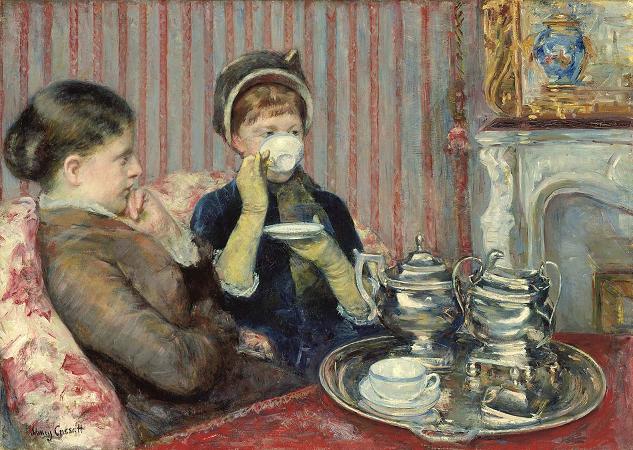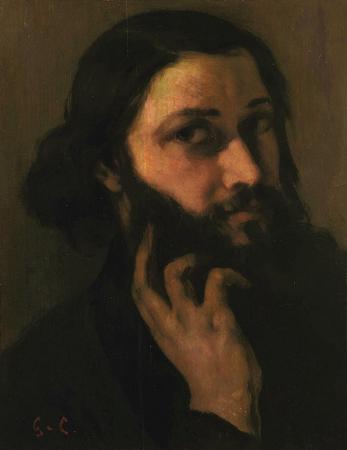Gustave Courbet (1819 - 1877). Jean Désiré Gustave Courbet was a French painter who led the Realism movement in 19th-century French painting. Committed to painting only what he could see, he rejected academic convention and the Romanticism of the previous generation of visual artists. His independence set an example that was important to later artists, such as the Impressionists and the Cubists. Courbet occupies an important place in 19th-century French painting as an innovator and as an artist willing to make bold social statements through his work. Courbet's paintings of the late 1840s and early 1850s brought him his first recognition. They challenged convention by depicting unidealized peasants and workers, often on a grand scale traditionally reserved for paintings of religious or historical subjects. Courbet's subsequent paintings were mostly of a less overtly political character: landscapes, seascapes, hunting scenes, nudes, and still lifes. An active socialist, Courbet was active in the political developments of France. He was imprisoned for six months in 1871 for his involvement with the Paris Commune, and lived in exile in Switzerland from 1873 until his death. I am fifty years old and I have always lived in freedom; let me end my life free; when I am dead let this be said of me: 'He belonged to no school, to no church, to no institution, to no academy, least of all to any régime except the régime of liberty.'. Gustave Courbet was born in 1819 to Régis and Sylvie Oudot Courbet in Ornans. Being a prosperous farming family, anti-monarchical feelings prevailed in the household. Courbet's sisters, Zoé, Zélie and Juliette, were his first models for drawing and painting. After moving to Paris he often returned home to Ornans to hunt, fish and find inspiration. Courbet went to Paris in 1839 and worked at the studio of Steuben and Hesse. An independent spirit, he soon left, preferring to develop his own style by studying the paintings of Spanish, Flemish and French masters in the Louvre, and painting copies of their work. Courbet's first works were an Odalisque inspired by the writing of Victor Hugo and a Lélia illustrating George Sand, but he soon abandoned literary influences, choosing instead to base his paintings on observed reality. Among his paintings of the early 1840s are several self-portraits, Romantic in conception, in which the artist portrayed himself in various roles. These include Self-Portrait with Black Dog, the theatrical Self-Portrait which is also known as Desperate Man, Lovers in the Countryside, The Sculptor, The Wounded Man, The Cellist, Self-Portrait, and Man with a Pipe. Trips to the Netherlands and Belgium in 1846-47 strengthened Courbet's belief that painters should portray the life around them, as Rembrandt, Hals and other Dutch masters had. By 1848, he had gained supporters among the younger critics, the Neo-romantics and Realists, notably Champfleury. Courbet achieved his first Salon success in 1849 with his painting After Dinner at Ornans. The work, reminiscent of Chardin and Le Nain, earned Courbet a gold medal and was purchased by the state. The gold medal meant that his works would no longer require jury approval for exhibition at the Salon, an exemption Courbet enjoyed until 1857. In 1849-50, Courbet painted The Stone Breakers, which Proudhon admired as an icon of peasant life; it has been called the first of his great works. The painting was inspired by a scene Courbet witnessed on the roadside. He later explained to Champfleury and the writer Francis Wey: It is not often that one encounters so complete an expression of poverty and so, right then and there I got the idea for a painting. I told them to come to my studio the next morning. Courbet's work belonged neither to the predominant Romantic nor Neoclassical schools. History painting, which the Paris Salon esteemed as a painter's highest calling, did not interest him, for he believed that the artists of one century basically incapable of reproducing the aspect of a past or future century. Instead, he maintained that the only possible source for living art is the artist's own experience. He and Jean-Francois Millet would find inspiration painting the life of peasants and workers. Courbet painted figurative compositions, landscapes, seascapes, and still lifes. He courted controversy by addressing social issues in his work, and by painting subjects that were considered vulgar, such as the rural bourgeoisie, peasants, and working conditions of the poor.
more...














